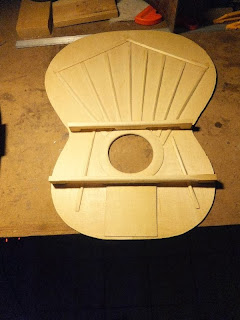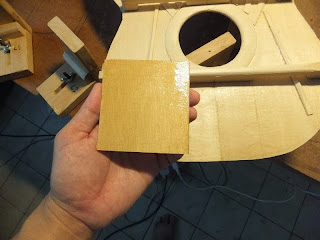20131219
A guitar came into my shop for repair.
The owner complained of buzzing.
After checking it didn't really buzz that much unless you played very hard.
But I did notice the string height was very high
The tuner was not install properly too.
So after a brief examination I told the owner I would be redoing the tuner and lower the action.
Today after checking the string height it's a whopping 14mm.
This is way too high.
The action at 12th fret is 4.5mm
If I lower the action I think it would be just nice.
As I removed the strings I notice the tuner were stuck!
After finally removing the strings and the screws for the tuenr
I noticed that the tuner holes were too tight.
This need to be widen a bit to allow smoother turning of the worm gears.
I will be checking the frets and geometry next but due to lack of time I had to leave it for the next session.
20131224
2 talented young guitarist gave me a visit at my workshop.
One came for a quick set up, which I help to lower the action.
The guitar was by Esteve, but I can only lower the treble to about 3.5mm as the isn't much bone left in the saddle.
The neck angle was wrong for the guitar.
Any lower either the bridge's saddle block has to be shaved down or the fingerboard adjusted at the nut region which means the frets has to be removed.
That will be more serious repair work.
The other guitar by Aparicio has a single protruding fret when I tried.
So it buzzed at one of the high frets which I think is C# or D note on 1st string (I forgot which note).
So I just file it lower and recrown it.
I gave the other frets a rub on the steel wool to restore the shine.
After the repair / set-up work, I showed them the various tone woods and explain a bit of how I build guitars
All in all it was an enjoyable time.
Now back to repair.
I opened up the tuner holes with my dremel, manual sanding will take up too much time.
I tried the tuners and now they can be turne properly.
After some lubrication they should be as smooth as butter.
Then I did the set-up, marking the saddle with the correct action and plane down the saddle blank to the marking.
When I tried playing I notice more buzzes on the 1st string and 6th string.
Then I check the fret and realised the fret works was badly done.
In the end I spend quite some time leveling the frets and re-crowning them.
They played better but still not perfect.
It can only properly if I take out all the frets and level the fingerboard properly.
But the repair cost would properly cost more than the guitar itself so this will suffice.
Once I fill in the screw holes for the tuner and re-drill the pilot holes the guitar will be ready.

A zoom-out view showing how the action is determined. The Aluminium bar is 3mm and the scraper at nut is 1mm.

Sanding level the frets - the fret work is badly done with many protruding frets in the higher region above 12th frets.
20131226
Finally I glue up the original screw holes and drill a new pilot hole of 1 mm.
After putting in the tuner I screw in the holding screw.
I tighten up the strings to try and with normal (not heavy) plucking the string doesn't buzz.
Hard plucking will be different story though.
Anyway it should be done once I adjust the intonation and polish up the saddle a little.
I adjusted the intonation and tried out the guitar.
Under normal playing it won't buzz that much.
The higher frets proved to be a little problem.
Well it can only remedied fully if I pull out all the frets and level the fingerboard accordingly.
For now, this will do fine.

























































